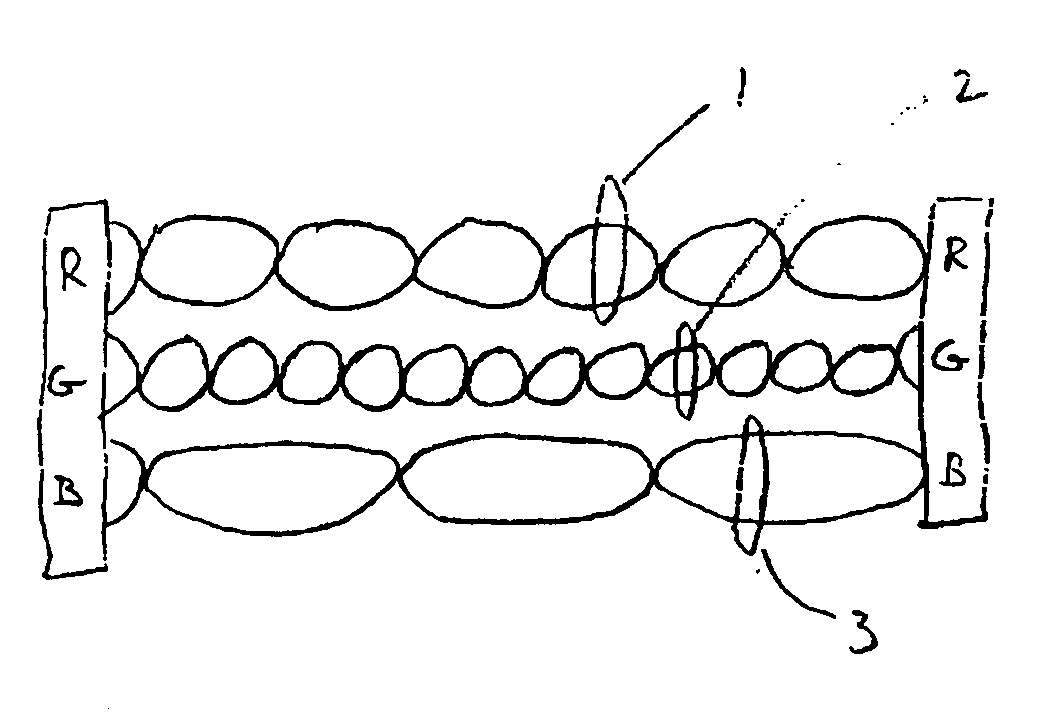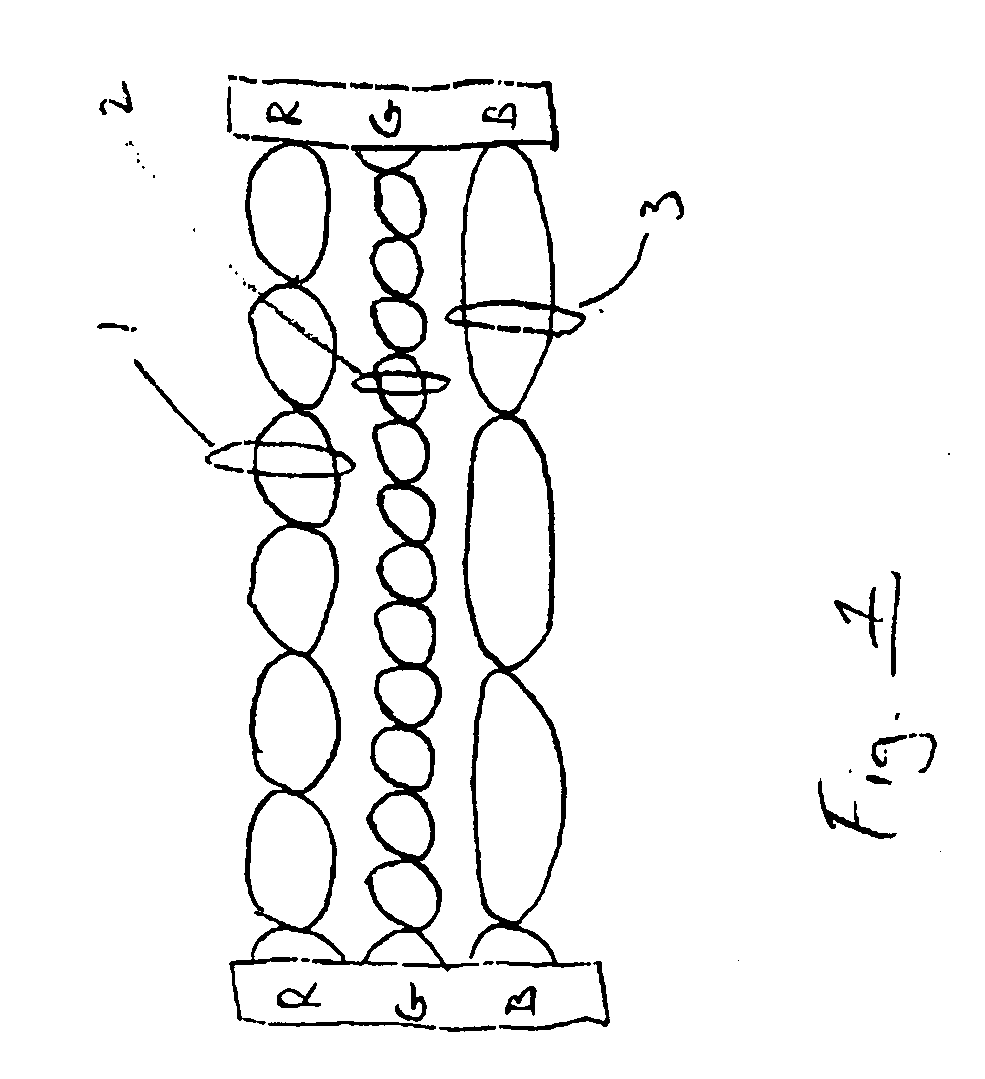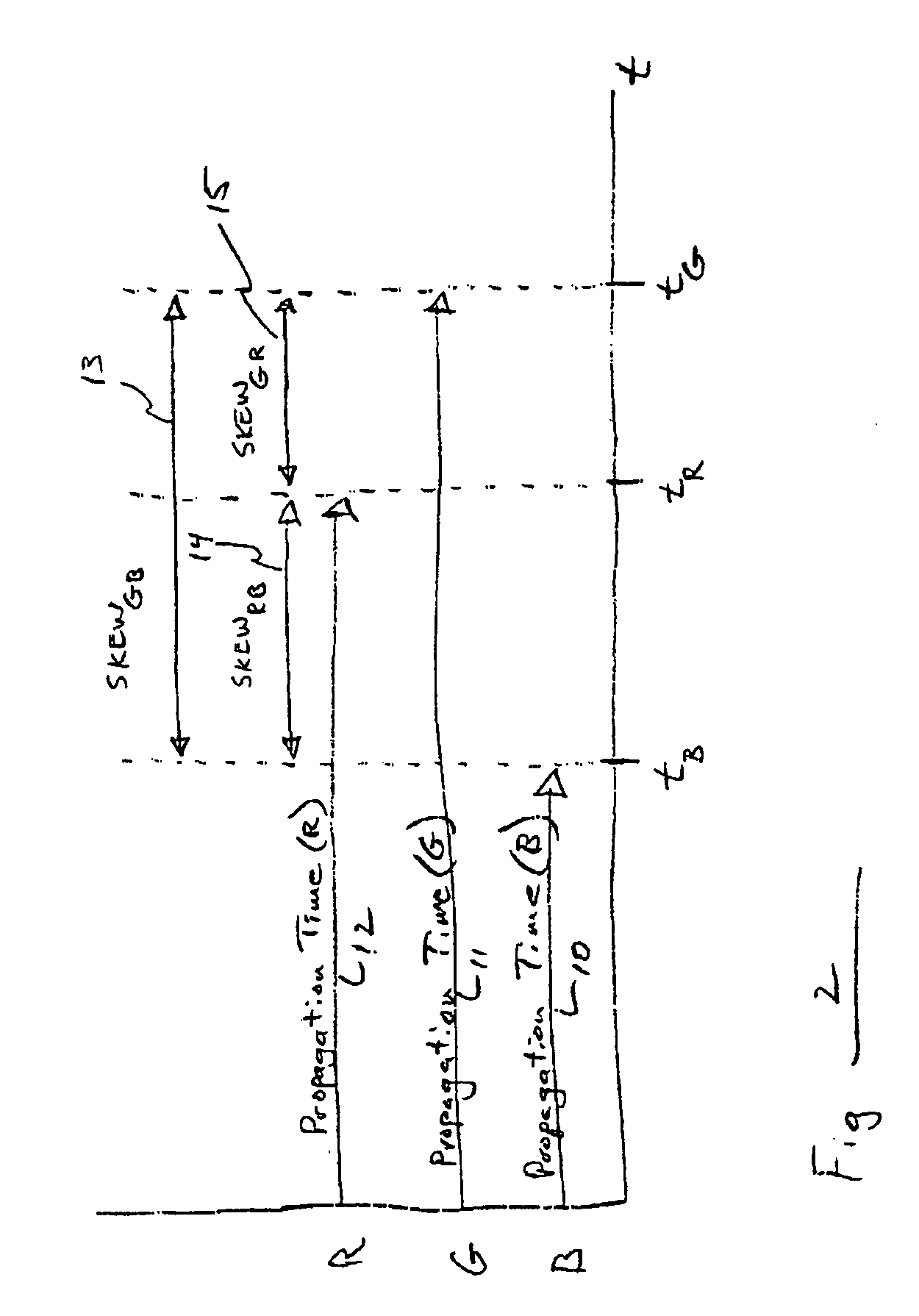Pixel skew compensation apparatus and method
a technology of skew compensation and apparatus, applied in the field of pixel skew compensation, can solve the problems of signal skew also occurring in multiple twisted pair cables, video sub-pixels arriving out of phase due to cable skew, and achieving the effect of eliminating skew
- Summary
- Abstract
- Description
- Claims
- Application Information
AI Technical Summary
Benefits of technology
Problems solved by technology
Method used
Image
Examples
Embodiment Construction
[0026] Referring now to FIG. 1, cables comprised of twisted pair signal wires are typically constructed so that each pair is twisted at a different rate. Different twist rates are used in order to reduce the amount of cross talk coupled between pairs of signal wires. In the representative cable shown in FIG. 1, twisted pairs 1, 2 and 3 are twisted at different rates. It should be noted that the difference in twist rates between pairs is exaggerated in FIG. 1 for purposes of illustration only. Pair 2 has the highest twist rate followed by pair 1 and pair 3, respectively. For the analog video signals being transmitted over the cable of FIG. 1, the analog video signals are comprised of three color components—red, green and blue. In the example shown, the red color component is transmitted over pair 1. While, the green and blue color components are transmitted over pairs 2 and 3, respectively.
[0027] In general, for a twisted pair of wires, the higher the twist rate, the greater the pro...
PUM
 Login to View More
Login to View More Abstract
Description
Claims
Application Information
 Login to View More
Login to View More - R&D
- Intellectual Property
- Life Sciences
- Materials
- Tech Scout
- Unparalleled Data Quality
- Higher Quality Content
- 60% Fewer Hallucinations
Browse by: Latest US Patents, China's latest patents, Technical Efficacy Thesaurus, Application Domain, Technology Topic, Popular Technical Reports.
© 2025 PatSnap. All rights reserved.Legal|Privacy policy|Modern Slavery Act Transparency Statement|Sitemap|About US| Contact US: help@patsnap.com



